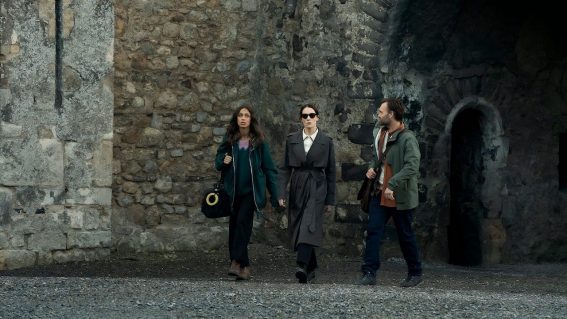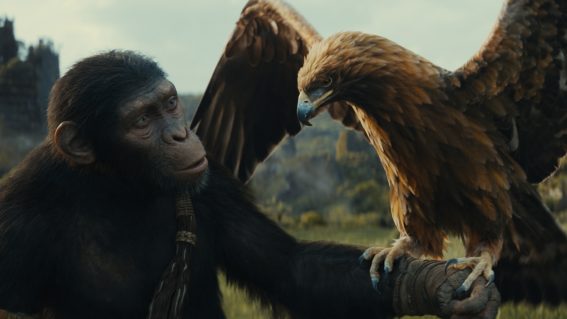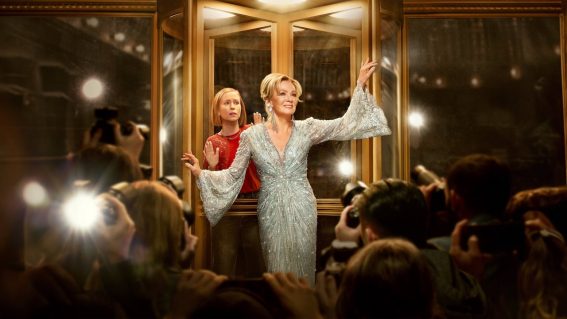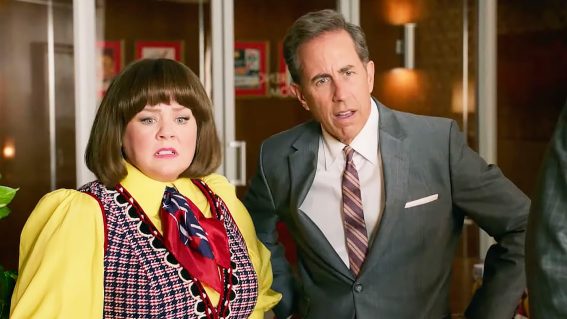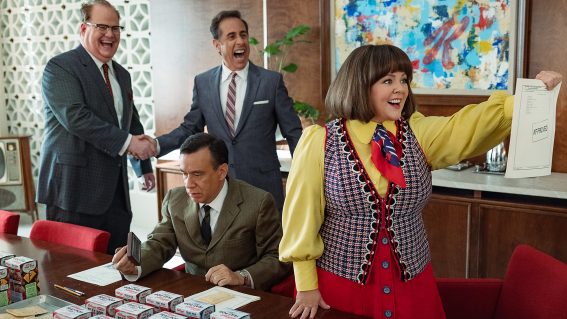Archive of horror capsule reviews from the UK
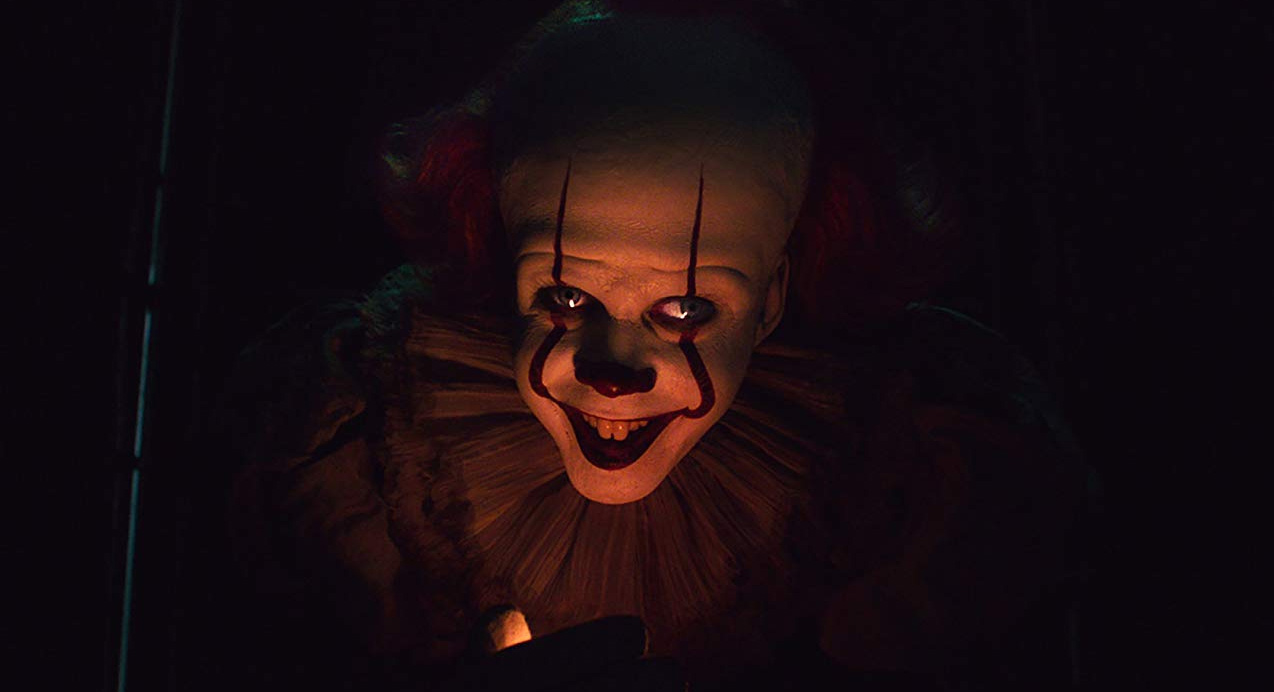
Here we’ve preserved Rory Doherty’s short and sweet reviews of horror movies that have been moved from their original streaming platforms. You can find their current streaming homes by clicking each title.

12 Hour Shift (2020)
This low-budget slice of sleaze is a deliciously mean-spirited and quick-paced riot. Set over the course of one emergency room double-shift, a drug-using nurse needs to find a replacement kidney for an organ trafficker, as long as the police or killers can’t get them first. Written and directed by Brea Grant, it’s an impressive and gory ride that ratchets up the tension as more bodies hit the floor—not for the squeamish.

1408 (2007)
One of the more restrained Stephen King adaptations, 1408 still dives headfirst into spiralling lunacy with its haunted writer protagonist. A haunted hotel debunker (it’s apparently a job) takes residence at The Most Haunted Room™, where the most shocking discovery is that John Cusack can make an effort acting—a talent that’s necessary to face up against phantasmagorical happenings that plumb the depths of his psyche and turn him inside out.
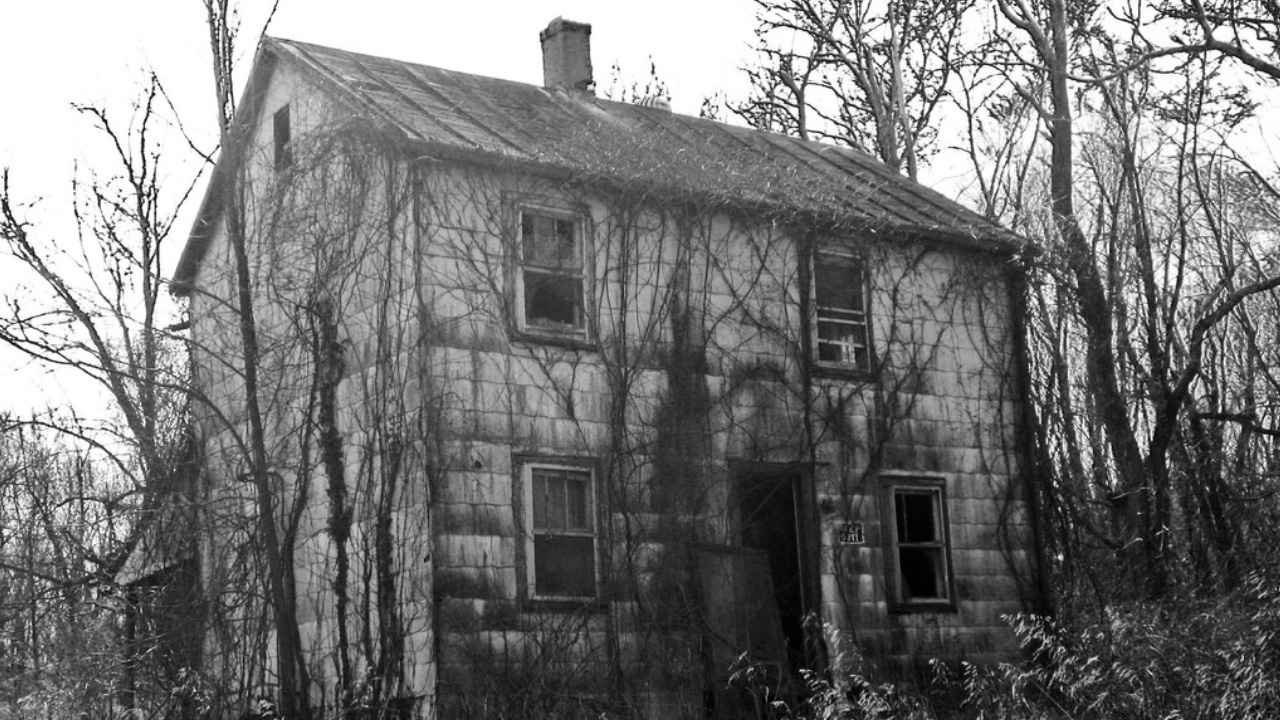
The Blair Witch Project (1999)
It made a huge impact back in 1999, and deservedly so—this easy-to-dismiss chiller revolutionised the way we thought about on-screen terror. Our characters, three obnoxious film students, are reduced to raw nerves as they find themselves completely isolated and disorientated in the forests of Maryland, where even a vague campfire tale of a witch/serial killer is enough to feel like you’re being constantly watched.
The Changeling (2008)
With The Exorcist III, Firestarter, and this, Oscar-winner George C. Scott carved a little niche of “man who’s really annoyed about being in a horror movie.” This Canadian chiller meshes Shirley Jackson ghost antics with contemporary conspiracy anxieties, and there’s no-one better suited at having bulging eyes and demented paranoia over the supernatural than Scott. Screaming Canadian people, a fiery suitcase, and a haunted wheelchair fill out the supporting cast.

Chopping Mall (1986)
Jim Wynorski is a B movie legend, and with his film about robot security guards going rogue in a shopping mall overnight perfectly encapsulates the goofy, electric energy that you can only find in some low-budget cheesy horror. The characters are broadly detailed but performed admirably by the young cast, with enough head-explosions, combustions and electrocutions to pack into a two-hour film—let alone a 77 minute one.

Creepshow (1982)
In a collaboration for the ages, zombie pioneer George Romero and horror tale extraordinaire Stephen King revamped the twisted moral tales of EC Comics with this vibrant, delicious anthology film about horrid deeds not going unpunished. All the campy goodness is brought courtesy of B-movie usual suspects, as well as surprise appearances from Ed Harris and Leslie Nielsen. The dead walk, the living decay, and there’s plenty of prosthetic brilliance to keep you hooked.

Cujo (1983)
Stephen King doesn’t remember writing this book due to his cocaine addiction, and while some have argued you don’t need illegal substances in order to forget watching this, there’s something to be said about the buckets of sweat and hysterical atmosphere this film produces. In an age of every CGI movie animals, it’s impressive to see what feral movie magic was once relied upon to dial up the terror.
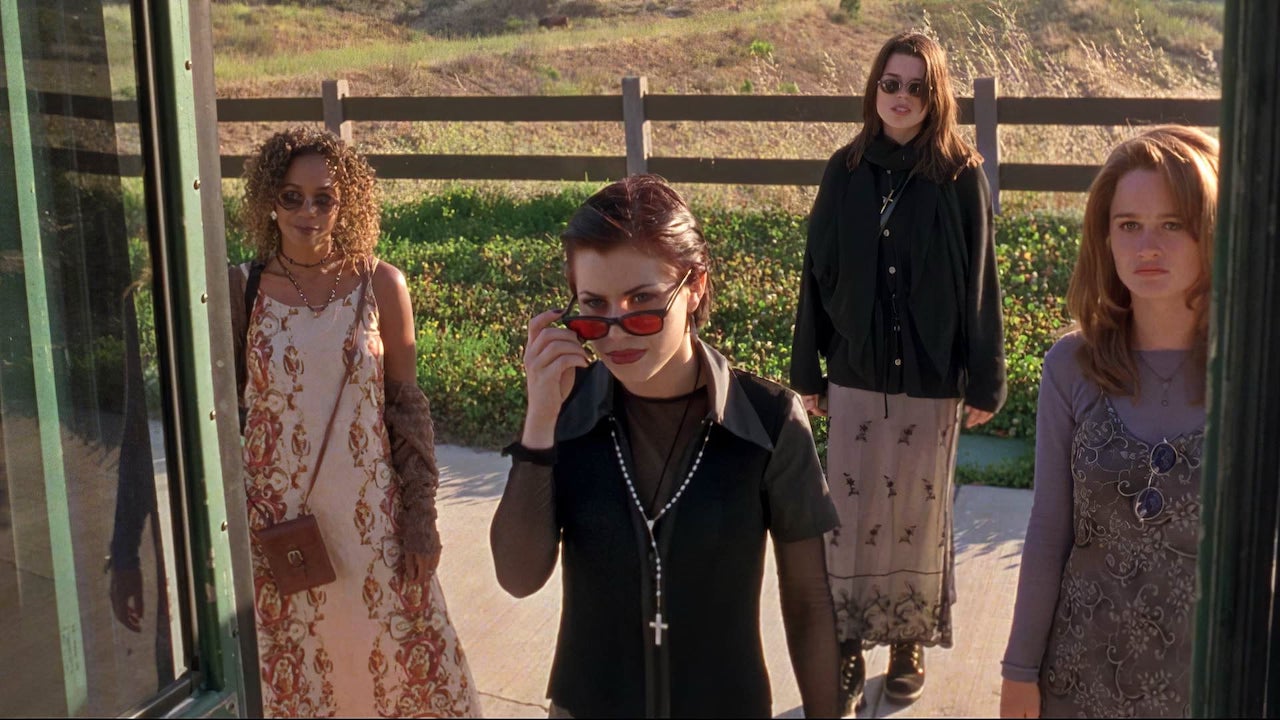
The Craft (1996)
Like many 90s classics, this film is so dated that it loops all the way back around to being iconic. A coven of witches at a Catholic high school get up to all sorts of poor taste sorcery shenanigans which, wouldn’t you know, don’t work out all too well for them. Scream’s Neve Campbell and Skeet Ulrich make appearances in this delightful piece of 90s cheese.
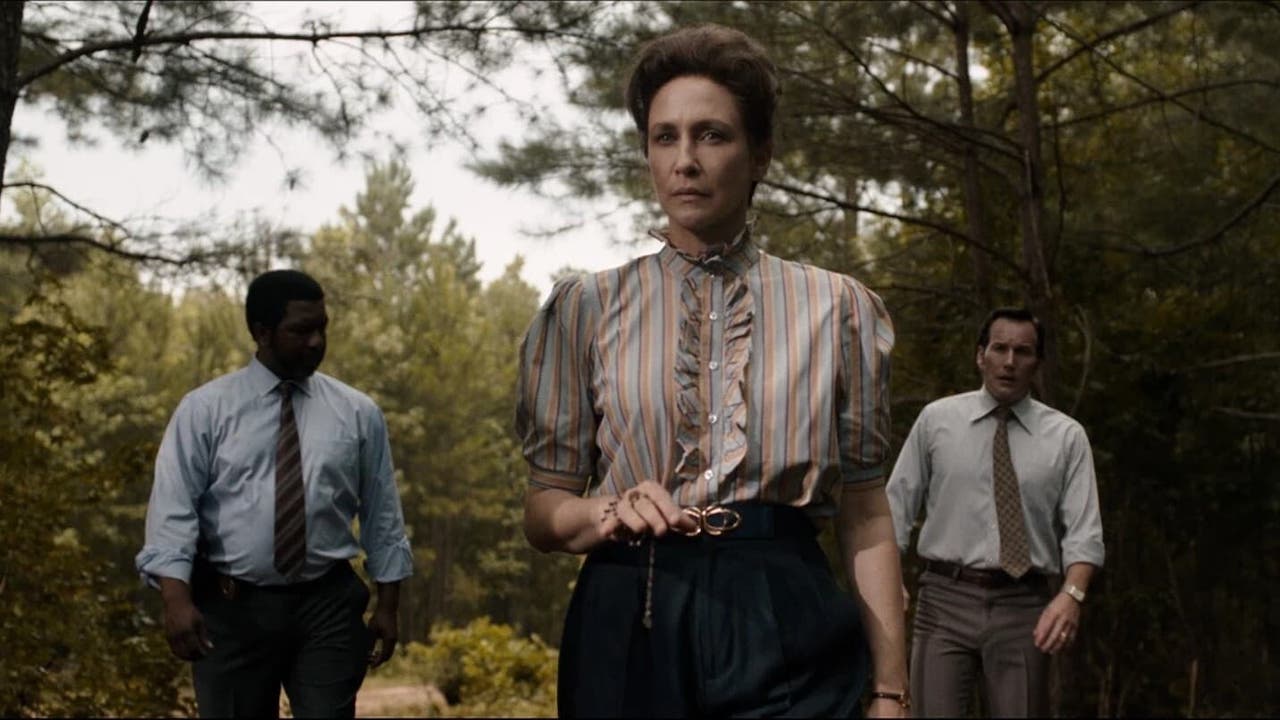
The Conjuring: The Devil Made Me Do It (2020)
Real-life and the supernatural never coincided more than they did in this Conjuring threequel, taking the case that ruined the Warren’s reputation and turning it into a thrill-a-minute ride with devils and ghosts that go bump in the night. Is this unethical? Probably! But Wilson and Farmiga simply can’t step a foot wrong, and enough of Wan’s directing slickness is carried over to make this a necessary watch for Conjuring-heads.

Dawn of the Dead (2004)
One of the few objectively good zombie movies, this remake is credited for the zombie boom of the 2000s that we’re only just seeing the back of now. The feature debut of Zack Snyder and an early screenwriting gig for James Gunn, the two soon-to-be superhero bastions brought to Dawn a great sense of scale and a flair for peppy, quippy characters. The end of the world sure is a fun ride!

Doctor Sleep (2019)
Mike Flanagan has made a name for himself in recent years as a maestro of spine-tingling, emotionally engaging horror—but between his plentiful Netflix projects, this sequel to The Shining risks going unnoticed. It has much more in common with Stephen King’s writing than the Kubrick adaptation, and injects energy vampires into the book’s story of damaged psychic children, with the great performances we’ve come to expect from Flanagan.

Escape Room (2019)
Ever been to an escape room and noticed how shabby and low-effort it is? You won’t feel the same disappointment with Escape Room, which pits strangers against the machinations of maniacal game masters. Each escape room is so implausibly complex and life-threatening, but there’s a genuine cleverness to how each of them are constructed – and something chilling about the bloody, surgical ways our players are dispatched. Think Cube for Gen Z!
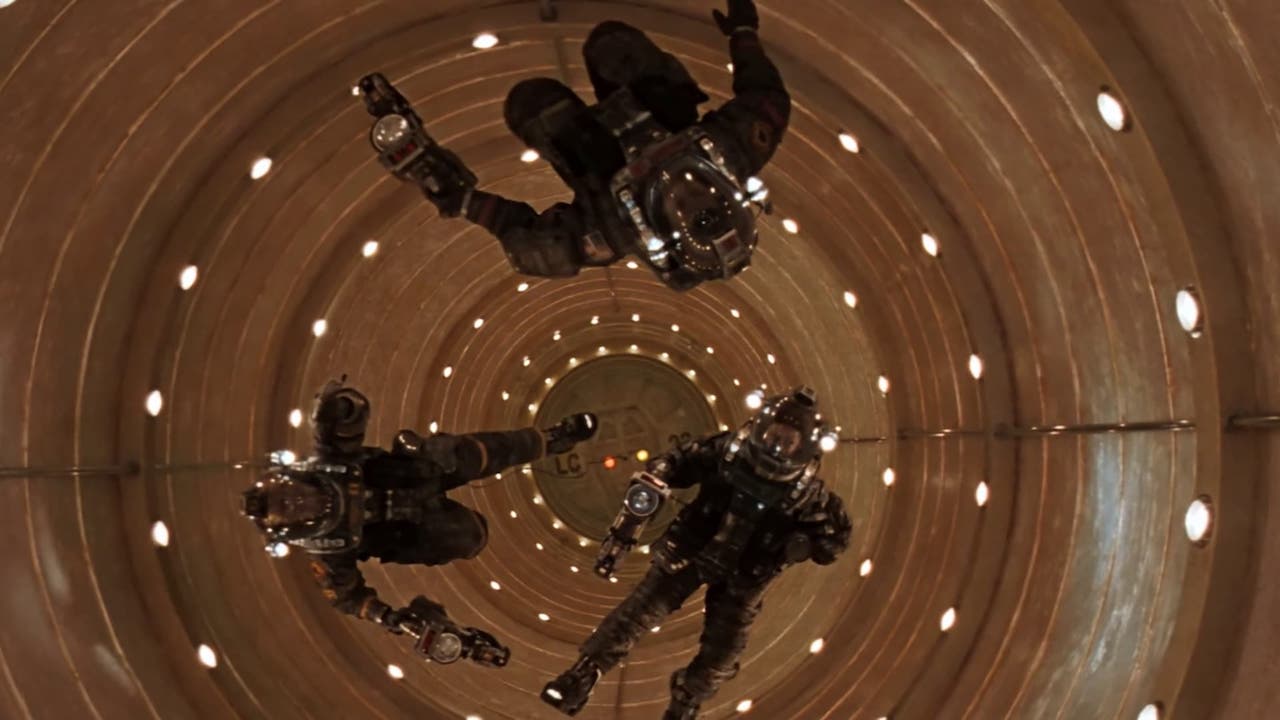
Event Horizon (1997)
Alien meets Hellraiser with a little dash of Solaris for good luck? Sign us up! Resident Evil helmer Paul W.S. Anderson took on some cosmic horror in a story of all hell breaking loose (literally) on an abandoned spaceship, as alternate dimensions of pleasure, pain and misery invade the minds of those sent out to rescue them. It’s a messy yet gorgeous sight to behold.

Evil Dead II (1987)
Less a sequel and more a remake, Evil Dead II rehashes the loose plot of the original and leans into its half-unintentional comedy (a lot of laughs from The Evil Dead come from how endearing its cheapness is). A never-better Bruce Campbell is horror icon Ash Williams, who is is assaulted by waves of tormentous demons—he and Raimi understanding that the “horror” in horror-comedies must be taken incredibly seriously.
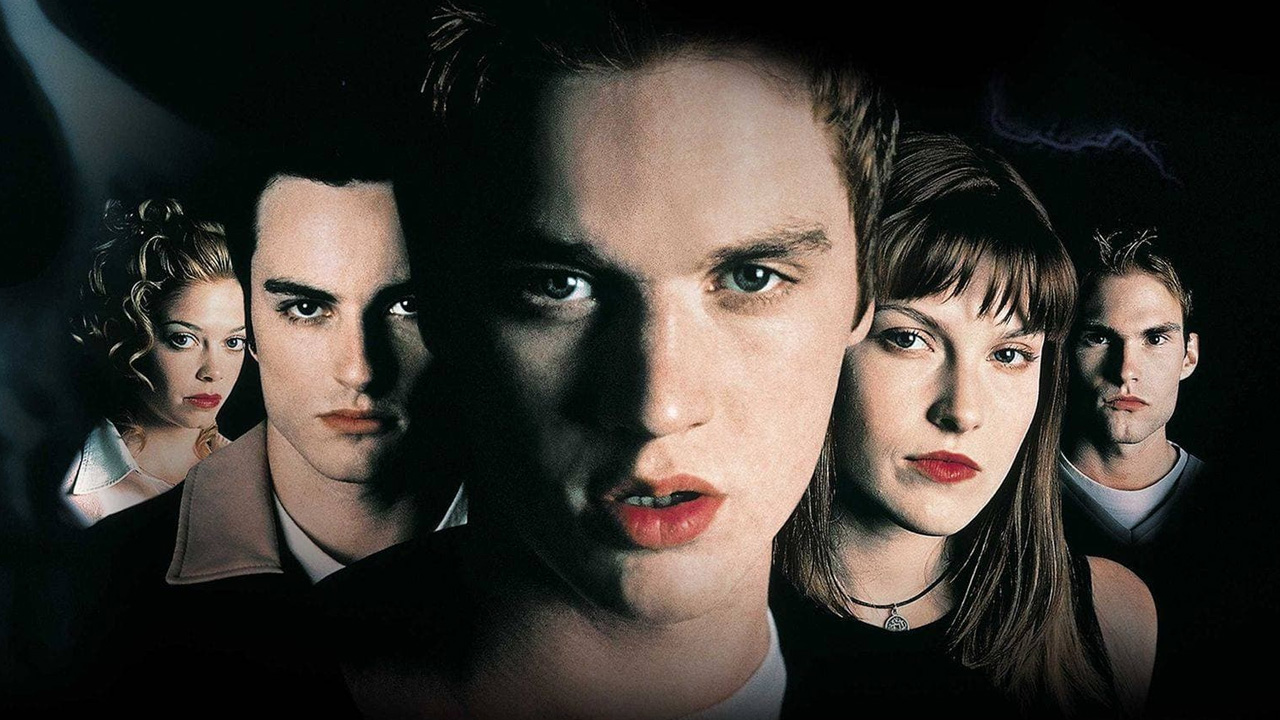
Final Destination (2000)
Post-Scream, turn of the millennium horror was filled with hot young actors being snarky and getting brutalised. Some were dead on arrival, but Final Destination managed to get its own successful franchise underway thanks to its fun premise: a premonition spares teens from tragedy and Death constructs elaborate and implausible kill sequences to get revenge. It’s a rare horror film in which the killer remains completely unseen.

Freaky (2020)
From the writer-director who remade Groundhog Day as a slasher, comes a remake of Freaky Friday…as a slasher. Christopher Landon’s Freaky adds the one thing the classic chick-flick lacked: a teenage girl body-swapping with Vince Vaughn. Freaky makes delicious use of its stars Vaughn and Kathryn Newton, unafraid to lean into touching character beats as well as bloody horror. Everyone involved is having such fun, you’ll be powerless to resist its spell.
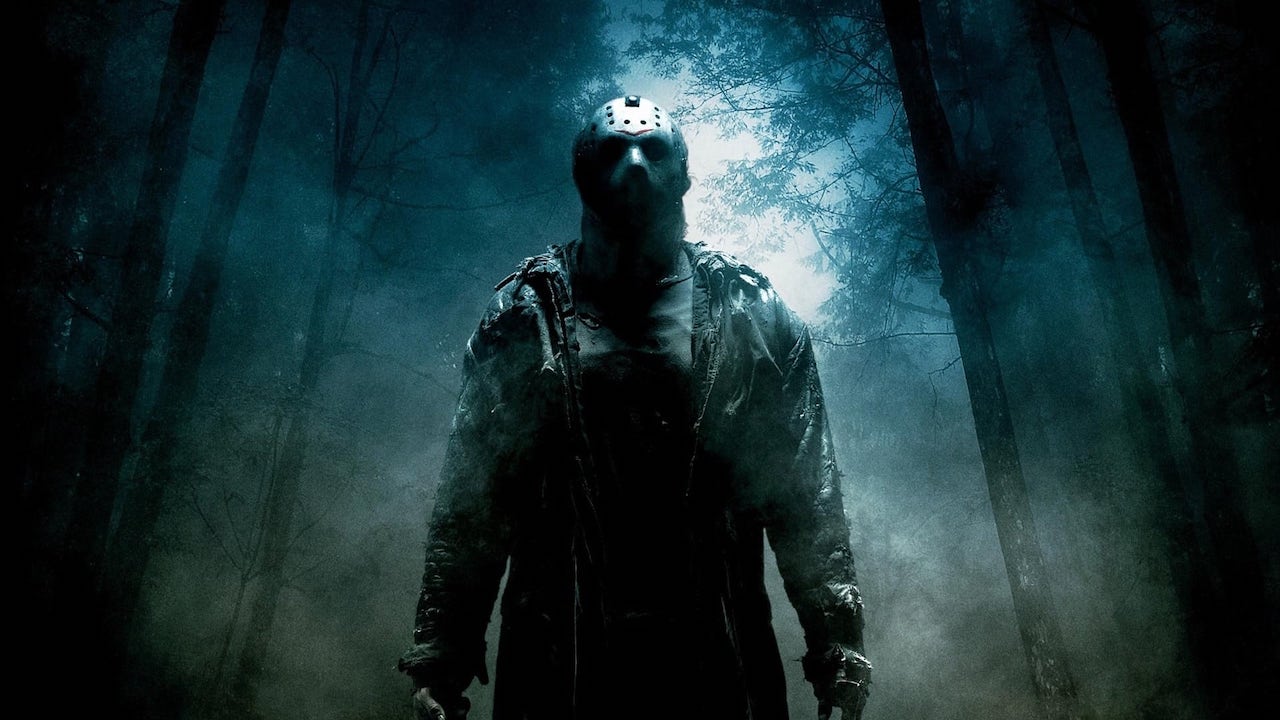
Friday the 13th (2009)
Not all 2000s horror remakes were terrible—some of them lived up to their schlocky, exploitative, and plotless originals. This remake combines story and iconography from a variety of Friday the 13th movies, almost like it’s speed-running the killers and their kills in one sub-100 minute slasher. The original Friday series was hampered with a lot of censorship that actually made them not terribly gruesome—twenty years on, this film delivers violence the series always meant to have.

The Fog (1980)
Some John Carpenter movies propose questions of identity, supplication, prompting feelings of paranoia and delusion. Others ask, “Wouldn’t it be scary if there was a smoke machine?” Carpenter is a faultless craftsman, thanks to all of his filmmaking faults having a potent charm to them. Ghost pirates haunting a coastal town make this film feel like a tale told around campfires—which is confirmed by the framing device of someone telling the film’s story around a campfire.

Halloween (1978)
A horror movie best experienced in the dark with your phone switched off, John Carpenter’s proto-slasher not only defined the next decade of horror, its impeccable craft and novel depiction of terror still has resonance. Michael Myers made his debut as a killer with an inscrutable motive and brutish strength, and the long shots of empty frames that fill the film make us more scared of his absence than his presence.
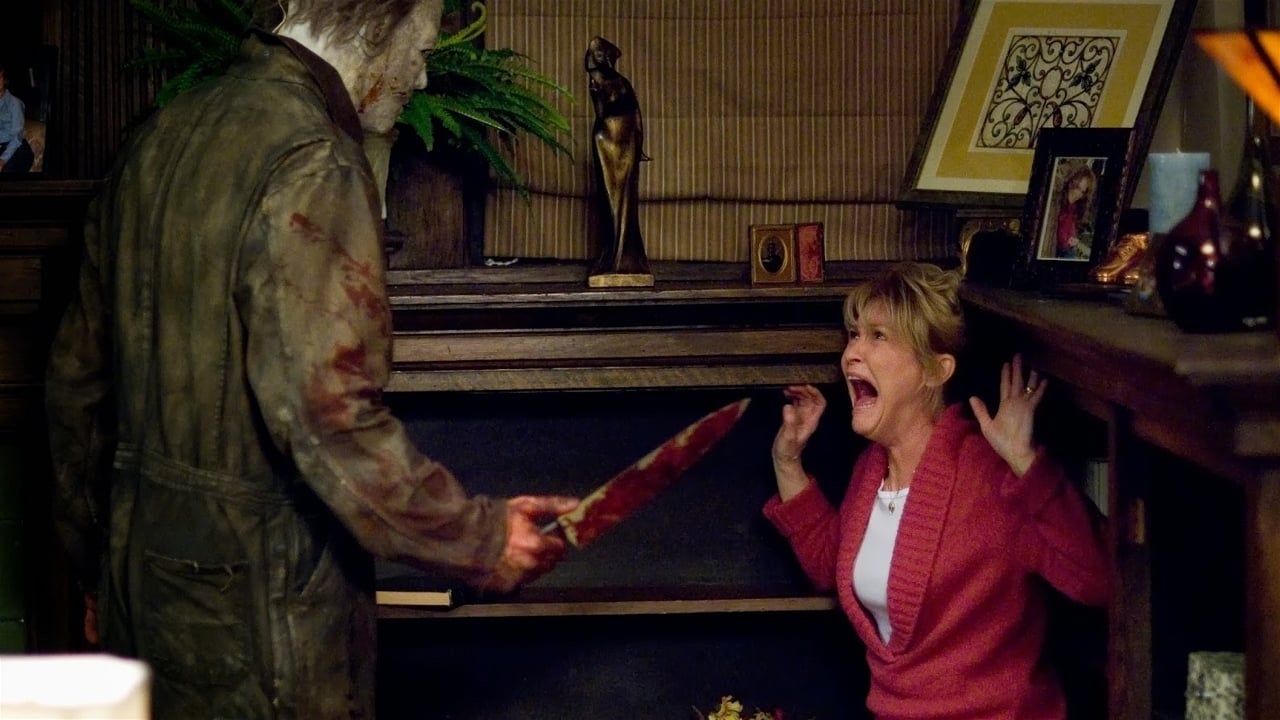
Halloween (2007)
Amidst a slew of subpar remakes of classic horror in the 2000s, grindhouse enfant terrible Rob Zombie offered an update of John Carpenter’s classic that built on the minimalist original in surprising ways. Many baulk at Michael Myers getting an extensive backstory, but it’s through this that we get a thoughtful, unflattering portrayal of Dr Loomis (here, Malcolm McDowell) and a humanisation of the masked slasher villain that other instalments have stayed clear of.
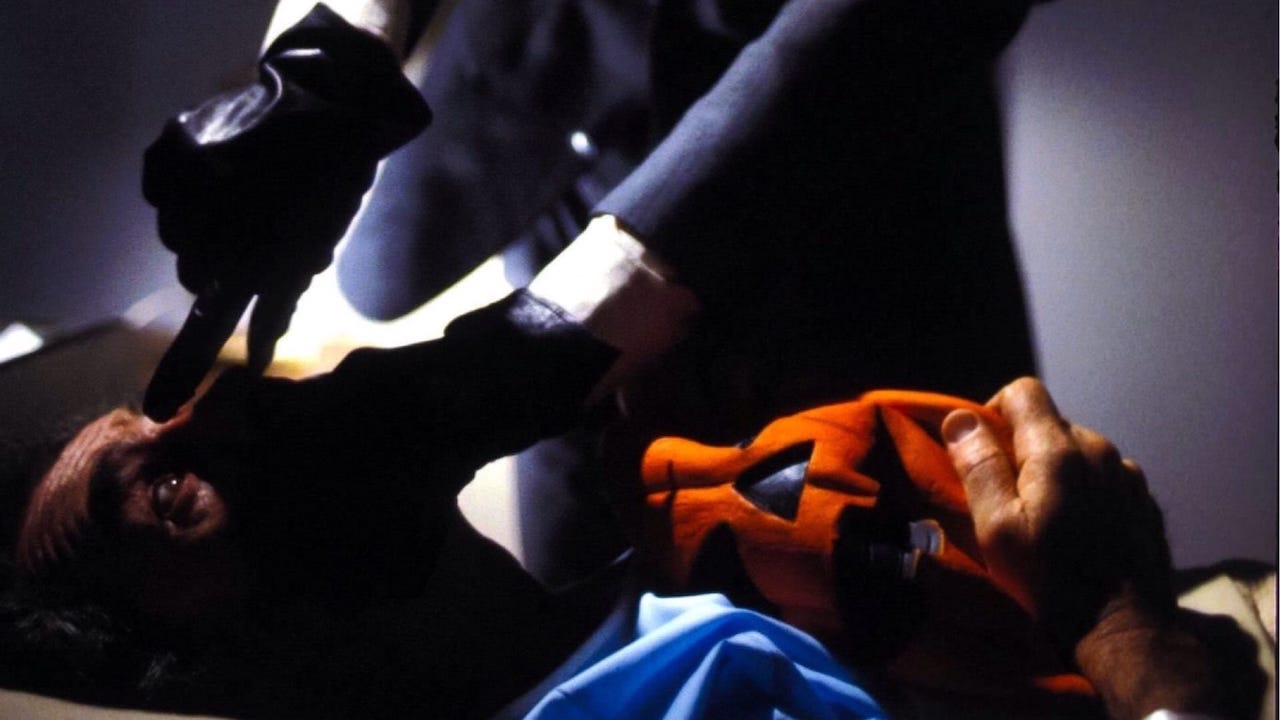
Halloween III: Season of the Witch (1982)
Listen, if you’re going to ape John Carpenter’s whole style, both in filmmaking and tone, you could do a whole lot worse than this. Famously the only entry in the franchise to not feature Michael Myers, this attempt at spawning an anthology series has some completely wacky ideas including warlocks, an earworm Halloween ditty, and heads getting turned into bugs. Also, there’s some separate, very compelling decapitations. Fun for all the family!

Halloween Kills (2020)
Definitely the black sheep of the new trilogy, but an undeniably entertaining oddity trying to pack as many ideas as possible into a very gory 105 minute runtime. Mob justice, the nature of evil, Michael Myers’ psychology—whatever ideas don’t land, there’ll no doubt be some that make you ponder. Plus, Gordon Green has a great rhythm for unexpected and nasty kills, showing there’s still life in this slasher franchise 43 years on.

His House (2020)
One of the finest examples of “horror as metaphor”, His House tells the story of Sundanese refugees escaping the trauma of war to live in the purgatory of a rundown English estate, where their home is haunted by those they left behind—and ghosts they brought with them. Its mood is rich with sadness and fear, and the stellar performances help sell the disorientation and paranoia that plague the refugees in a foreign land.

Hush (2016)
If there’s one thing Netflix loves, it’s a Mike Flanagan horror film. While not his debut by any stretch, Flanagan made his first big splash with this lo-fi home invasion film with a twist—the homeowner victim is Deaf. It’s a cat and mouse game of evading a twisted psychopath, and Hush’s pragmatic, resourceful protagonist means the film evades the tired symptoms of the overused genre.
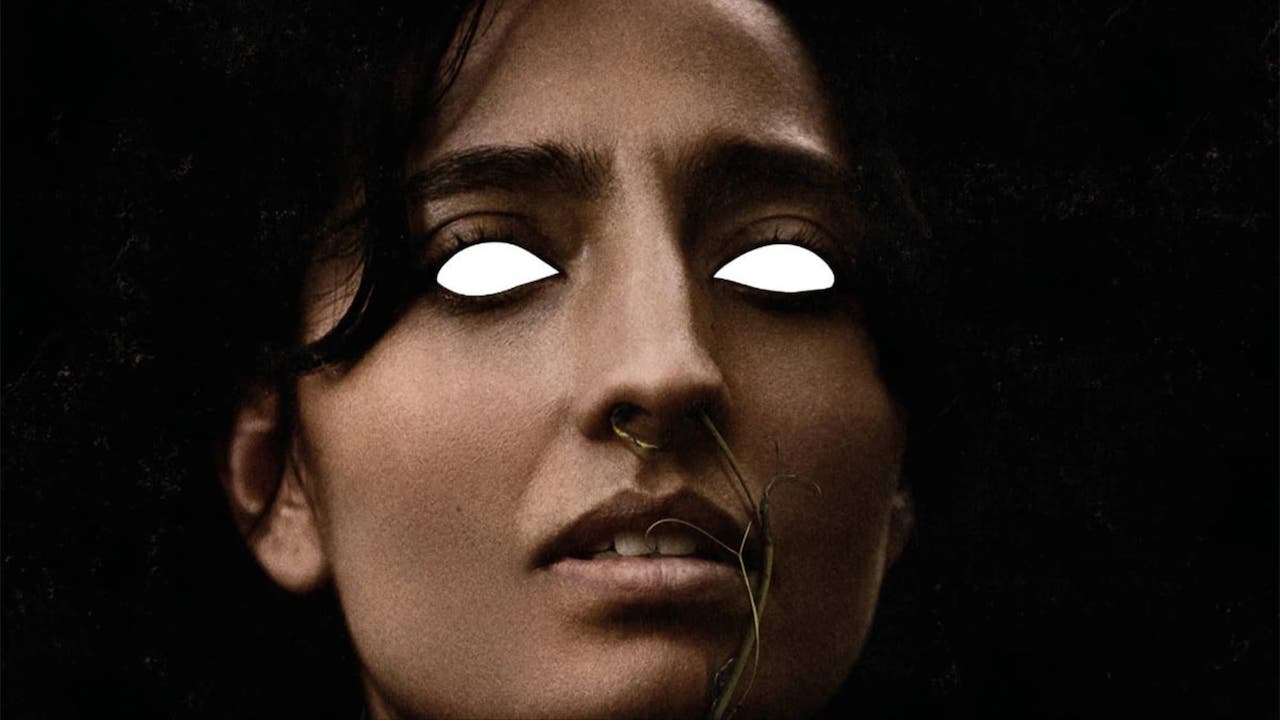
In the Earth (2021)
Folk horror usually keeps itself far away from scientific abnormalities, but Ben Wheatley was never one for sticking to the rules. Judging by its January 2021 premiere, this pandemic-shot nightmare fuel must have been shot as soon as the first lockdown was announced. But every bit of its mossy mutation horror feels perfectly crafted to grow under your skin, and a cast of sturdy British names keep you hooked throughout.
Filmed on a tiny scale in the early months of COVID, Ben Wheatley’s spiritual successor to his psychedelic A Field in England grasps with the folk- and bio-horror connotations of living through a pandemic. Starring creepy Brit extraordinaire Reece Shearsmith and a lot of warped, ambient noises, In the Earth gleefully meshes the pagan and biological for a confrontational and challenging descent into mania. Remember the folk horror rule of thumb: when in doubt, include a big haunted stone!
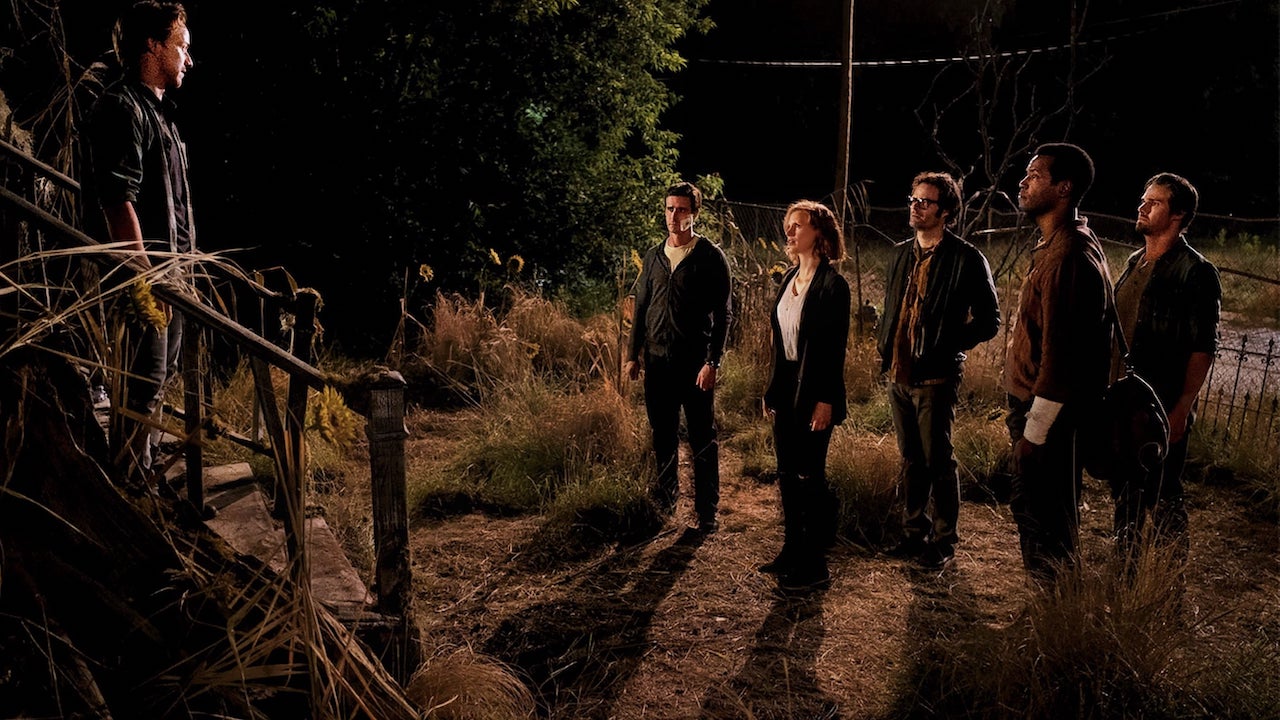
It: Chapter Two (2019)
The gargantuan follow-up to 2017’s hit Stephen King adaptation that clocks in at nearly 3 hours is filled to the brim with King references, great characters, and some excellent creepy clown action. The setpieces may get larger, to the point that the whole affair can feel bombastically overwhelming, but thanks to director Andy Muschietti’s flair for tense directing, and a flat-out brilliant villainous Bill Skarsgård, there’s enough to make any King-head squirm.
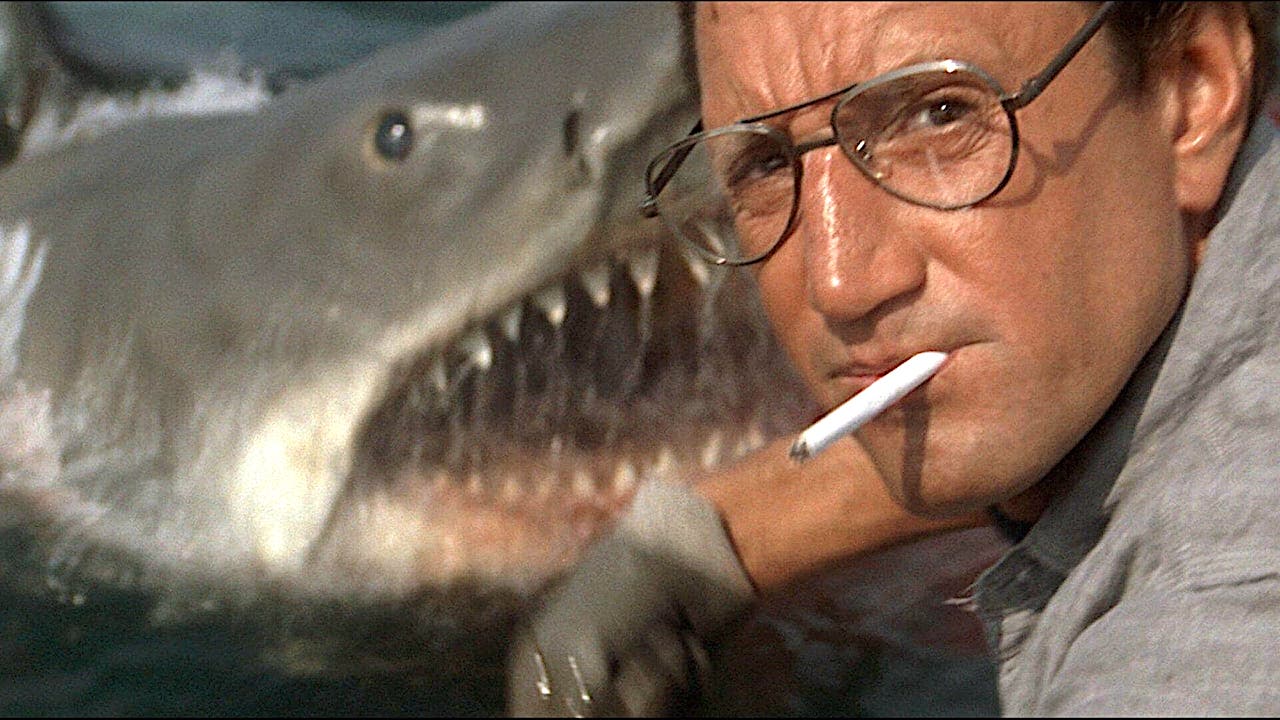
Jaws (1975)
It’s a shame Spielberg hasn’t returned to full horror films—he’s awfully good at them. Many of his films feature motifs of the genre (War of the Worlds is nothing short of traumatising), but only Jaws demonstrates just how much craft is required to scare mass audiences. Jaws also acknowledges that not showing a monster is just as scary as showing it. After all, anything could be in the water…
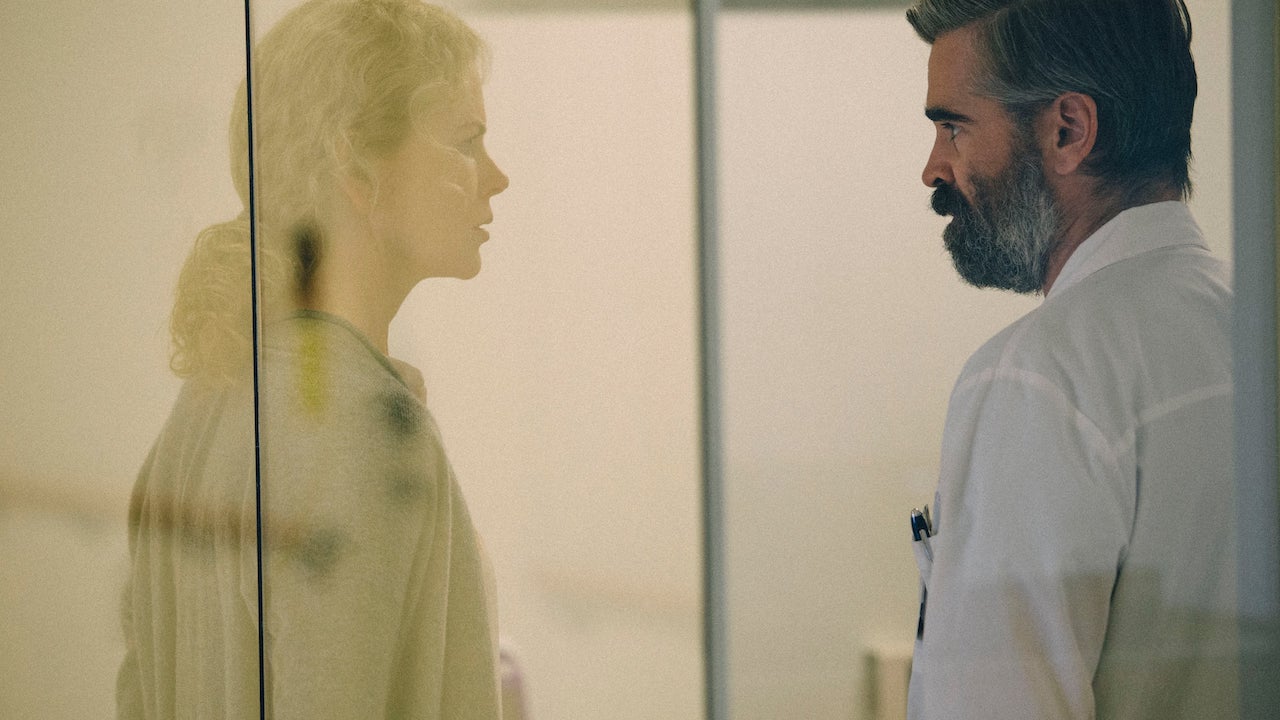
The Killing of a Sacred Deer (2017)
Yorgos Lanthimos made his name with acerbic, off-kilter comedies peppered with violence; it was refreshing to learn he’s well-suited to psychological horror too. Sacred Deer stars Banshees of Inisherin Barry Keoghan and Colin Farrell as the giver and recipient of a curse after a surgeon character fails to save a young man’s father—and features another deliciously weird Nicole Kidman performance. It’s intense, bewitching, and unpleasant—and that’s just the scene where Keoghan eats spaghetti.
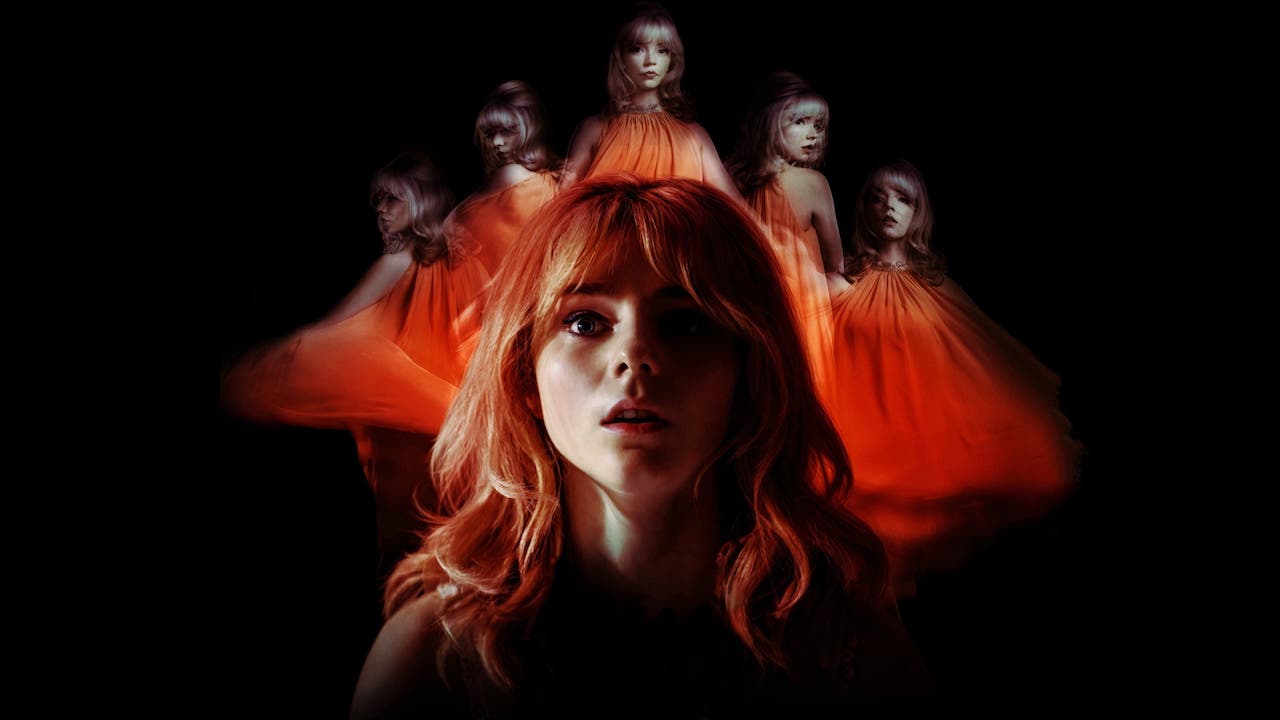
Last Night in Soho (2020)
Edgar Wright has made a name for himself meshing genres, but he played it unexpectedly straight in this glossy, Giallo-esque time-hopping horror about abuse and murder in 1960s London. Clearly his darkest film to date, Wright leans into the shocking and gory to weave a dual-timeline story where two women’s minds unravel because of the horrors they’re subjected to. Don’t worry, there’s still a lot of perfectly placed needle drops.

Life (2017)
Discovering alien life is everything astronauts dream of doing, so you can imagine their disappointment when all it does is try to violently kill them. This space station Alien-update manages to plough every grisly way there is to die on the ISS, and as you watch the carnage unfold, you can try to work your way out of this survival-horror nightmare yourself. As the shocking ending proves, it’s more difficult than you think.
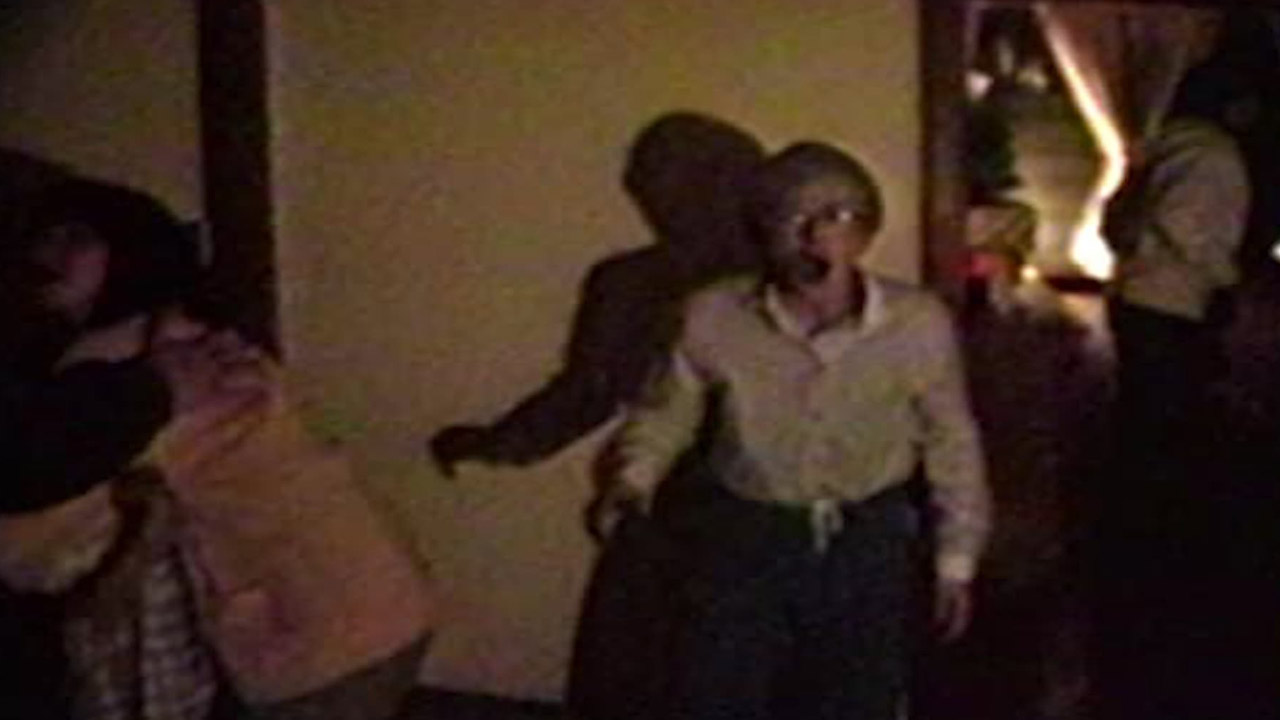
The McPherson Tape (1989)
Don’t go in expecting a modern found footage film: this pre-Blair Witch movie is much more experiential, immersing you in the lived reality of a rural family who come across UFO activity. The grainy camcorder loves pouring over walls of darkness, and the increasingly feverish panic that grips these relatives is super effective at placing you in the midst of something confronting and anxiety-inducing. It was experimental for the time, but still makes an intense 62 minutes.

Malignant (2021)
Let’s get WILD. James Wan, the king of weird shenanigans in horror, really knocked it out of the park with this one, an absolutely madcap, deranged descent into schlock that knows exactly what it’s doing, all the while reminding us just how much fun the ridiculous can be. Sleep paralysis, doppelgängers, and Italian slashers are all mixed up together in a film that is filled with reveals and twists that will drop your jaw to the floor.
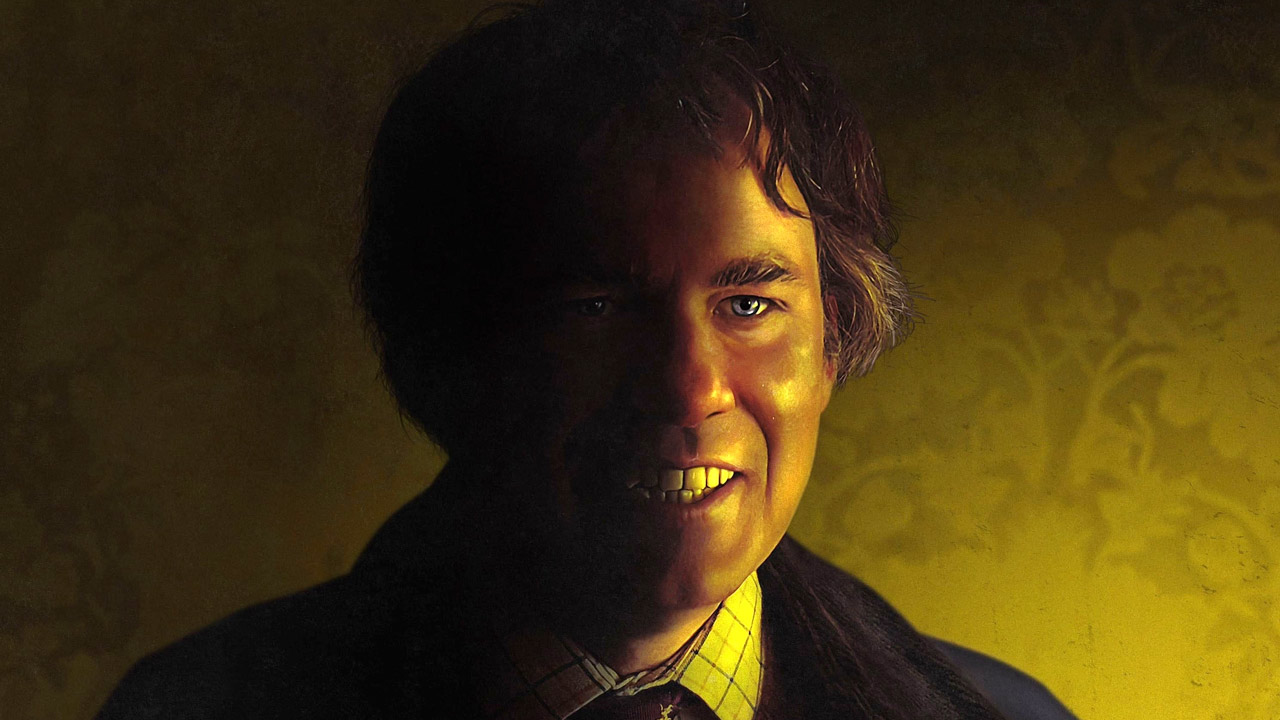
Men (2022)
His previous directorial efforts had flirted with nail-biting tension and confronting body violations, but Men marks Alex Garland’s most full-bodied embrace of the horror genre as a director. After a traumatising bereavement, a young woman (Jessie Buckley) retires to the English countryside—which turns out to be a maddening and horrific decision. The commentary on gendered trauma is less effective than the tight, creepy filmmaking craft on display, with drawn-out, quiet scares that unfold into something truly hideous.

Midsommar (2019)
If anyone invites me to attend international folk festivities, I am going to have to pass—in no small part due to the terrifying experience of watching this movie. Ari Aster followed up his overwhelming horror Hereditary with a film about abusive (and potentially fascist) cult communities, especially in how they may impact vulnerable, traumatised people. When all’s said and done, dumping your boyfriend sounds like so much less of a hassle.

Old (2021)
Watch out for the beach that turns you old! What an utterly bananas film. M. Night Shyamalan (who has funded all his films himself for about 7 years) is now fully back in his weird B-movie lane, albeit with holding onto the idiosyncratic strangeness that’s like marmite to audiences (why does everybody talk like that?!) Assembling a cast of international cinema darlings for his gorgeously shot shocker, prepare for things to get gnarly and weird, seaside-style.

The Others (2001)
A ghost story in an increasingly hostile and disorientating location, this English-language Spanish film tells an atmospheric, chilling horror story that indulges in mood and style before landing a terrifically upsetting ending. Nicole Kidman gets to fully lose her mind as she cares for her photosensitive children in a haunted Victorian house, and the film’s spooky qualities are made more notable for lingering long after the scariest moments.
Plenty of modern horror films riff on the spooky stories of cinema past, none more effectively than this ghosty chiller starring Nicole Kidman as a mother who believes her remote 1940s manor is haunted. Fittingly, it’s a film that otherises our internal wounds onto the people and walls around us, making ghost stories to distance us from our own pain.

A Quiet Place: Part 2 (2020)
The second entry into this projected trilogy delivered more than enough sonic horror thrills. When John Krasinski’s character bowed out of the first film (spoilers!), many assumed the focus would turn to Emily Blunt—but instead the children characters, especially the one played by Deaf actress Millicent Simmonds, took centre stage. They added a more nuanced dimension to the family drama at the centre of the horror, expanding director Krasinski’s skills for helming tense setpieces.
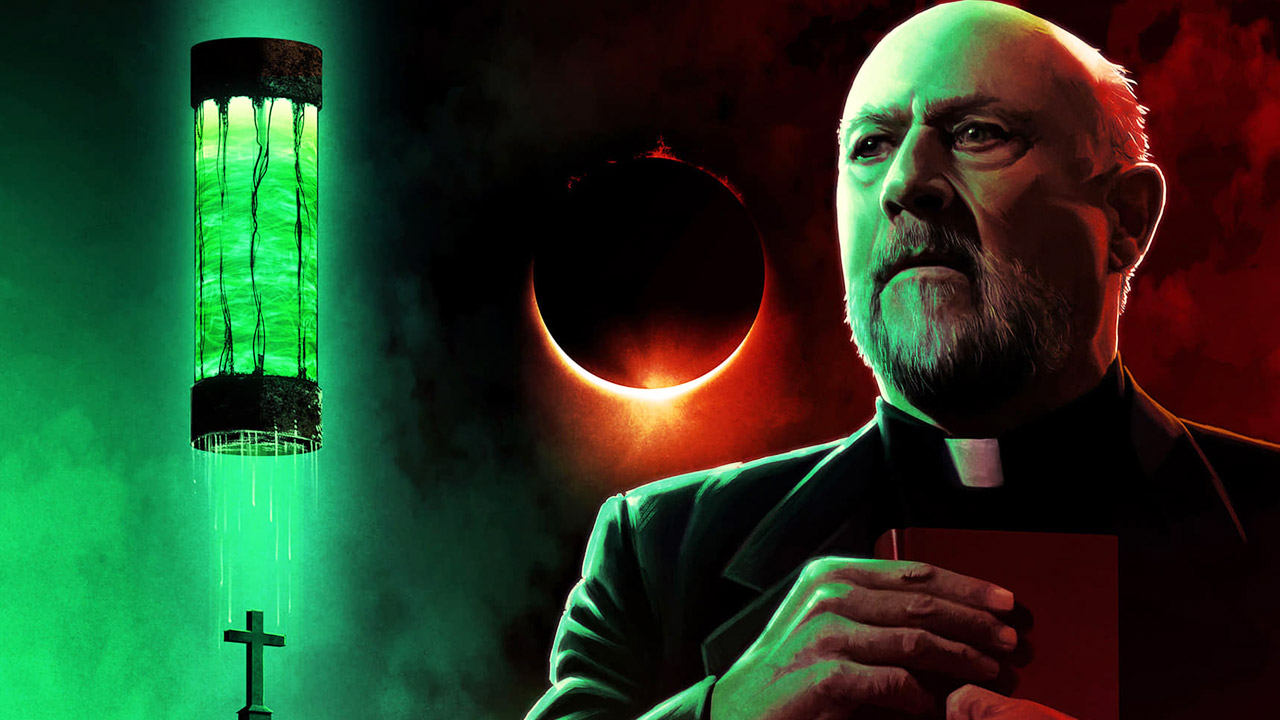
Prince of Darkness (1987)
The middle chapter in John Carpenter’s self-titled “Apocalypse Trilogy” (bookended by The Thing and In the Mouth of Madness), this is a great example of a horror director going completely heretic. A liquid embodiment of Satan is being investigated in a monastery, and a Catholic priest and quantum physicist must face off against swarms of shambling, possessed zealots. It’s less a watertight commentary on modern society and more an opportunity to hear the inspired ramblings of a horror titan.
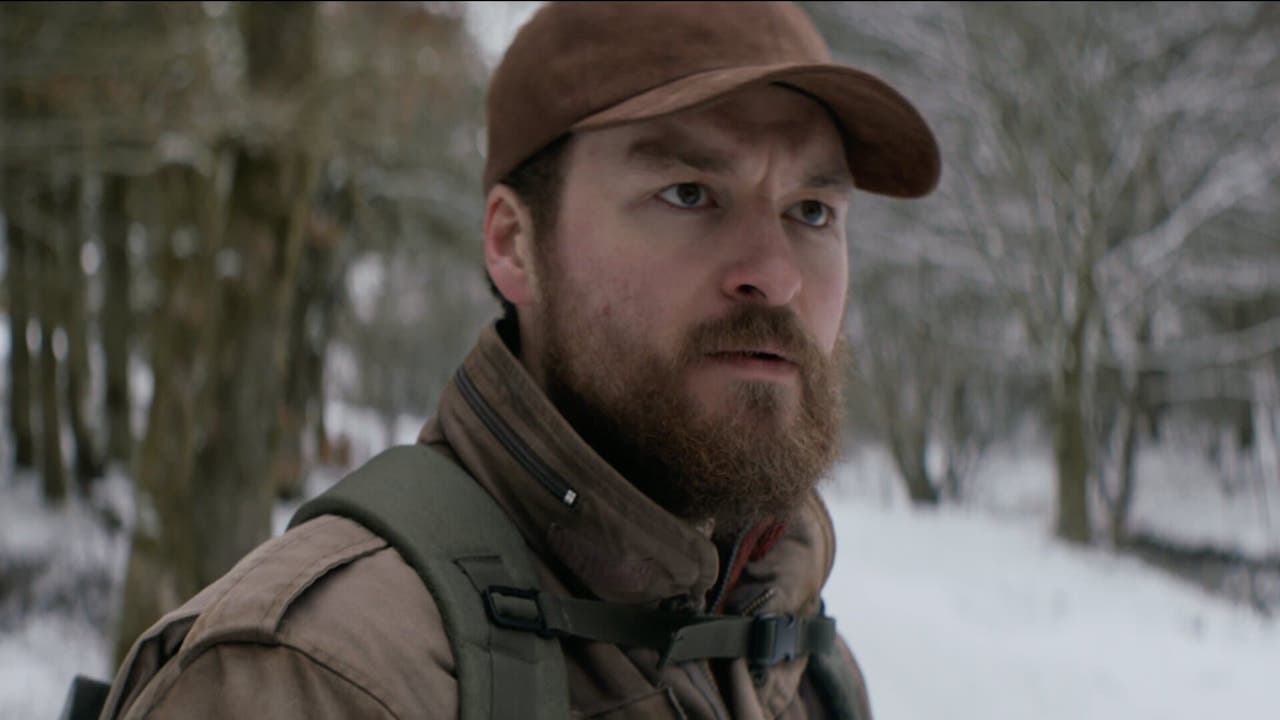
Rose: A Love Story (2020)
This indie movie spends a lot of time making you think its story is about one thing… before blindsiding you with its horror elements. Reminiscent of recent fare like Thirst, Midnight Mass, Raw or the upcoming Bones & All, it takes already existing narratives about monsters and puts them into a grounded setting, where we can read parallels into how our human relationships operate. Plus, while Rose always stays true to its subtitle, the film gets pretty nasty.

Red Dragon (2002)
Definitely not the best Hannibal Lecter adaptation, but a far sight better than the worst, Red Dragon was the third and final appearance of Anthony Hopkins’ venomous and verbose cannibal. The second adaptation of the first Lecter book (Michael Mann’s Manhunter will always reign supreme), Ralph Fiennes takes the killer role as Edward Norton hunts him down. It’s operatic, brash, and a whole lot of fun.
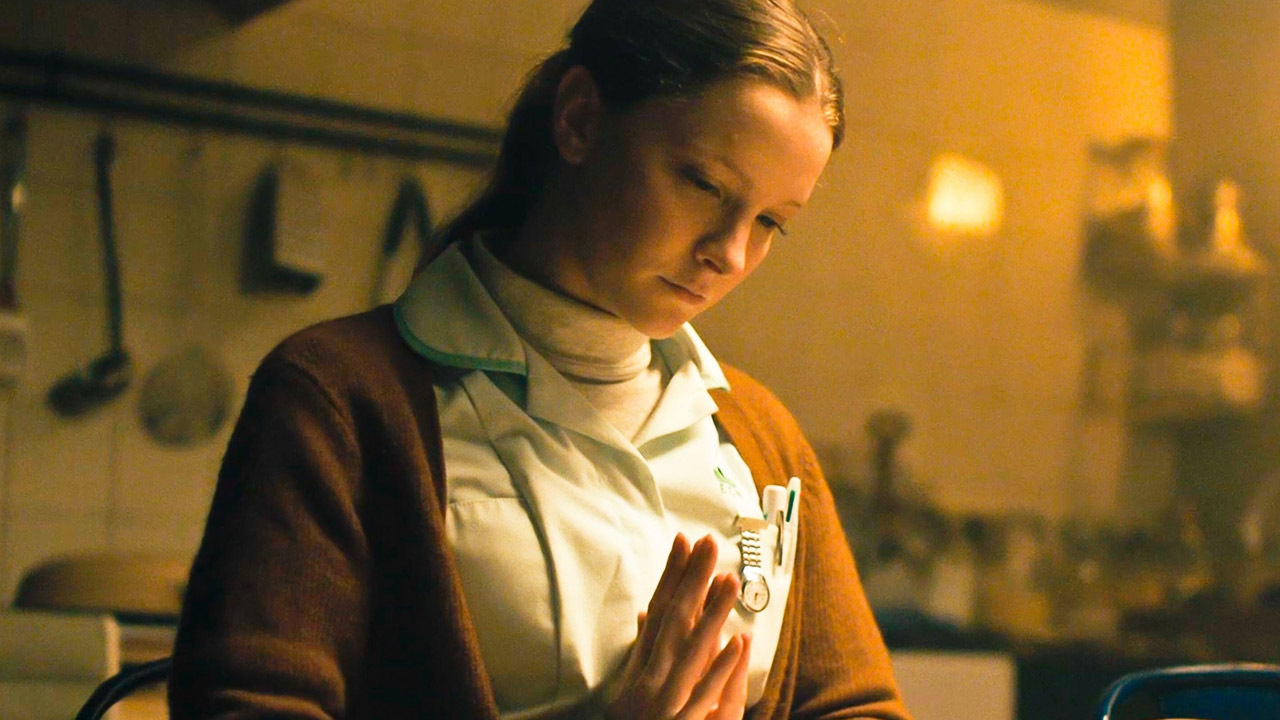
Saint Maud (2020)
The best part of films about delusions is trying to work out if our character’s perception of reality is actually accurate. Rose Glass’ shattering debut feature was a breakout film for star Morfydd Clark as a repressed, religious carer who becomes convinced her patient is affected by the devil himself. It dances around some thorny, gothic-esque ideas of possession, penance and evil, with an oppressive atmosphere and a striking ending.
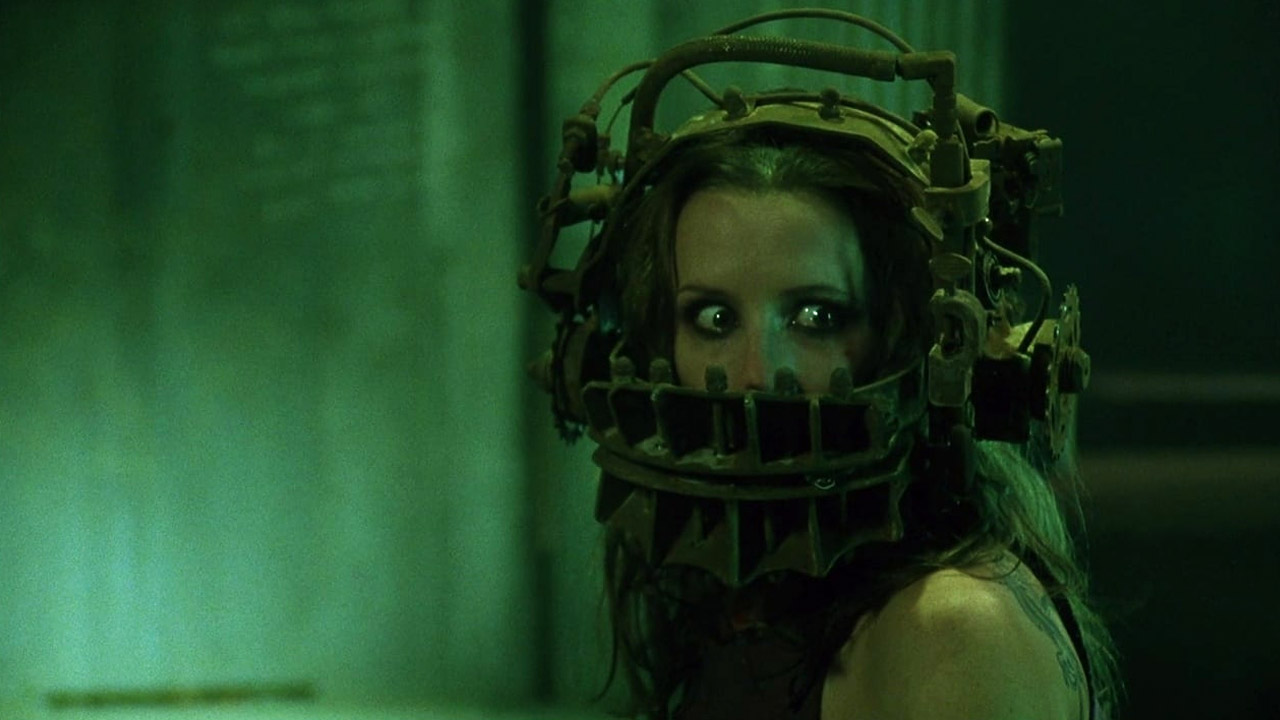
Saw (2004)
This bloated, ouroboric franchise has hit some pretty dire lows with its last two instalments, so before returning to the franchise’s implausibly twisty, shamelessly grisly origins with Saw X, why not revisit the low-budget first instalment directed by future horror icon James Wan? The plot bends itself over backwards trying to surprise you every five minutes, but it’s clear to this day how this film shocked a generation and opened the floodgates for gory cinema forever after.

Scream 4 (2011)
This film gave iconic slasher Scream a belated, modern, legacy sequel long before the 2022 version—and was helmed by franchise originator Wes Craven. By this point, audiences were incredibly invested in the cast of regular characters that populate the town of Woodsboro, and the pastiching of 2000s horror remakes found plenty to mock. Craven remains a terrific horror director, and this fourquel reminded everyone how much fun Scream can be.
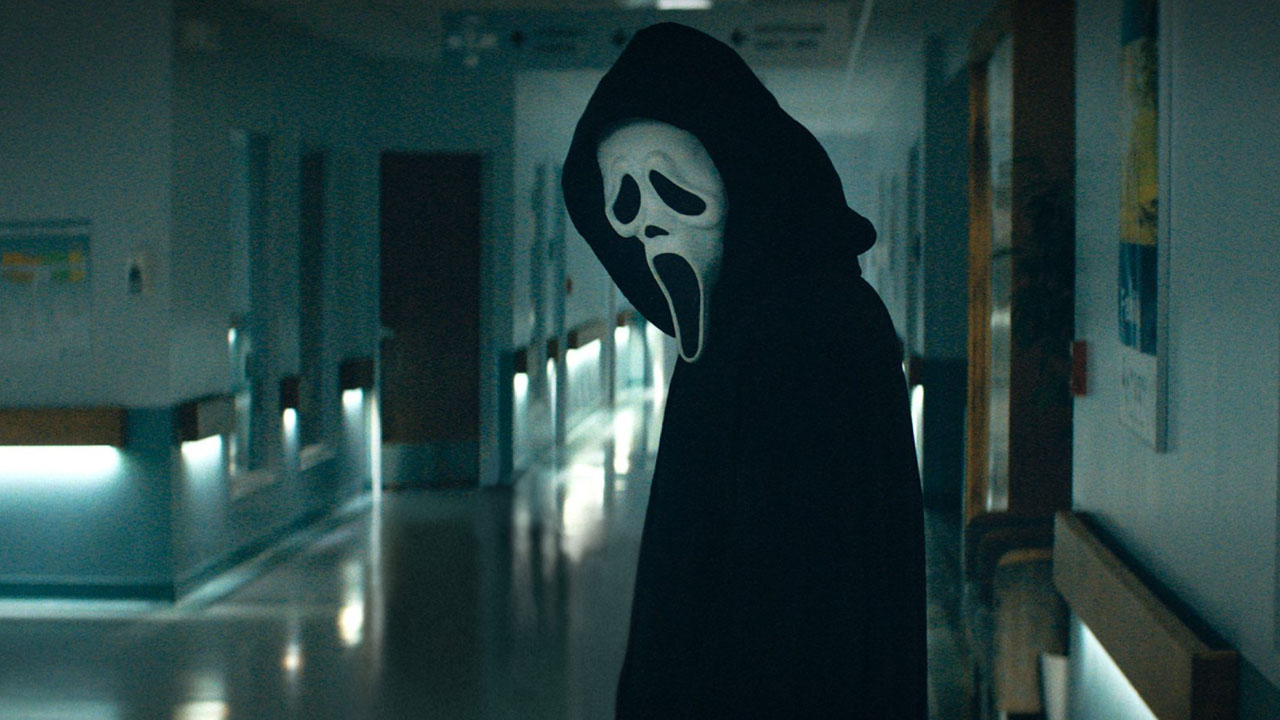
Scream (2022)
The first Scream movie not to be directed by Wes Craven, the fifth film in the franchise had a lot to live up to—but thankfully fans agree that it delivered. From the team behind Ready or Not, this gory and witty take on legacy sequels talked a lot about the relationship fans have with horror, taking the franchise’s meta-commentary to new levels. All the old favourites made welcome appearances, and the baton was confidently passed onto the next generation.

The Slumber Party Massacre (1982)
A rarity amongst slashers: this early 80s horror film was written and directed by women. Under the catchy title, there’s an edge to the first Massacre film; the script was originally penned as a slasher parody later repurposed into straight horror. A cult classic that inspired reimaginings and reappraisals alike, Massacre stands out in a very crowded slasher landscape as having an identity of its own.
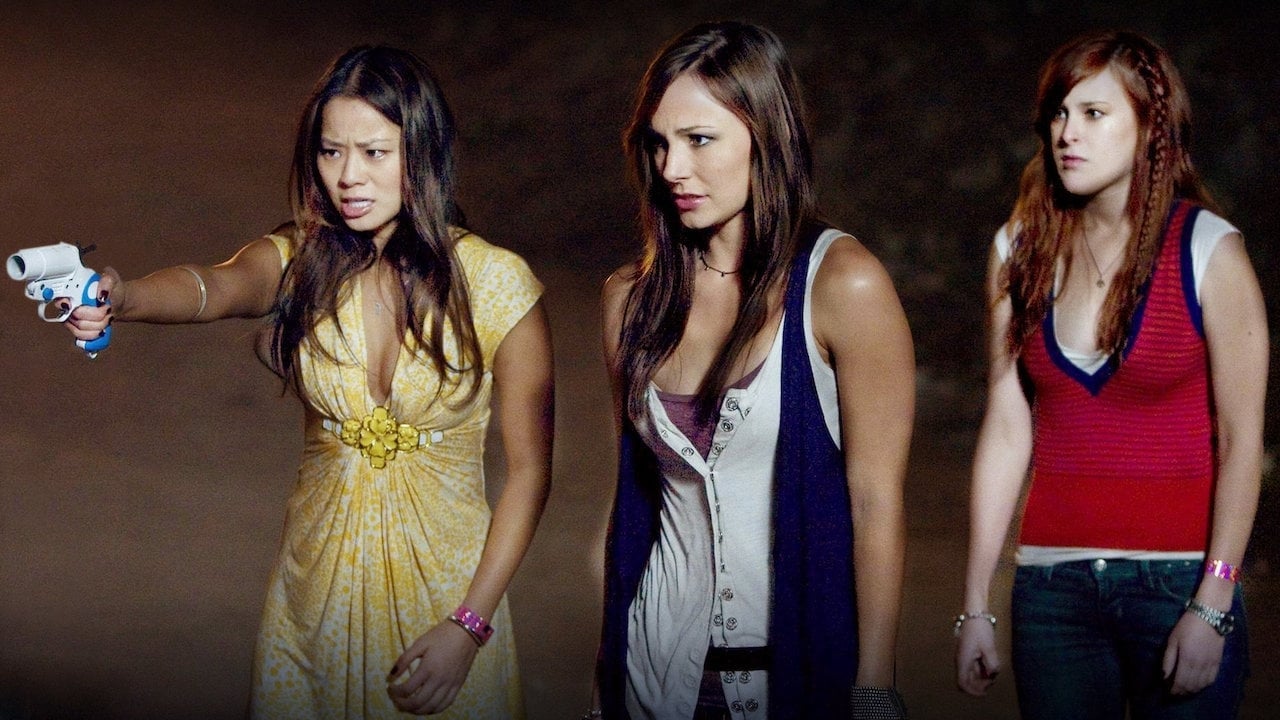
Sorority Row (2009)
Horror remakes were all the rage in the 2000s: it’s hard to overstate how ubiquitous they were (seriously, there’s multiple films on this list that were remade 20 years later). While a lot of them were not good, some of them benefited from the fact that the originals weren’t exactly Oscar-winning. Enter Sorority Row: a slasher whodunnit with the most aggressively 2009 cast (Jamie Chung! Briana Evigan!) and a whole lot of corny murder.
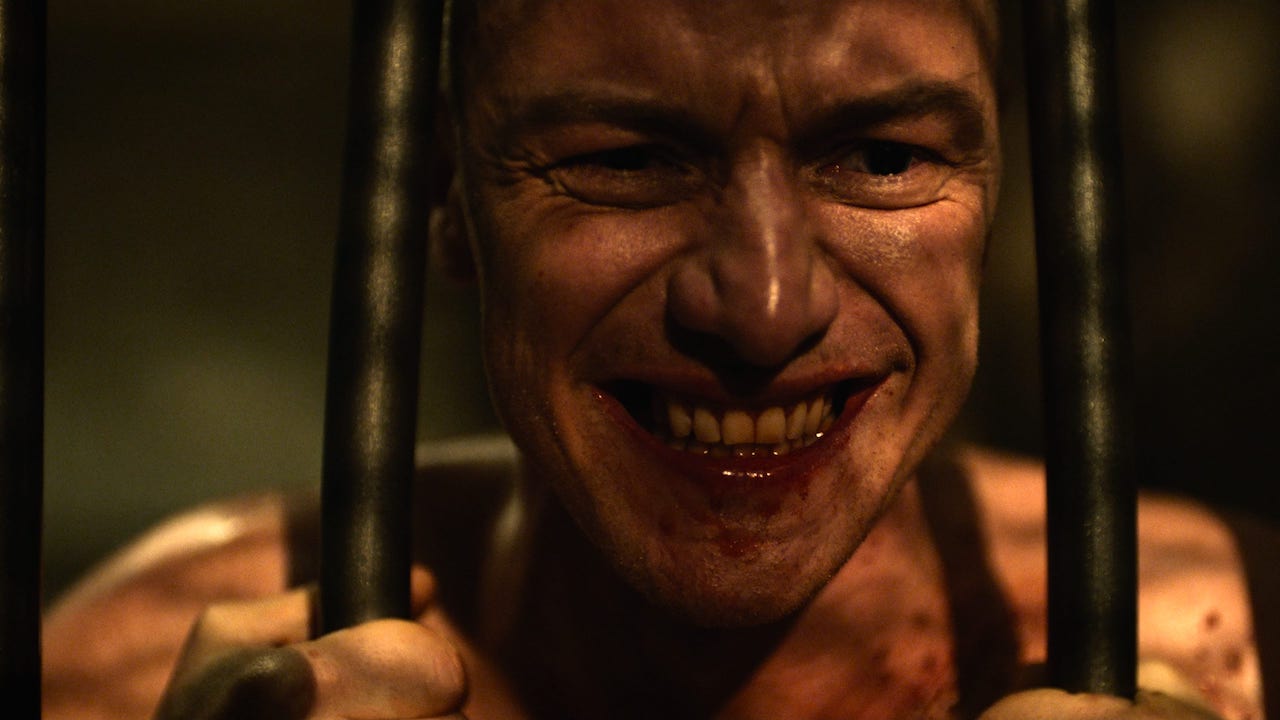
Split (2017)
Split ended up being a calling card for three of its main players; The Witch’s breakout star Anya Taylor-Joy, James McAvoy making an impressive horror debut as over 20 personalities, and a return to stylish, oddball form for M. Night Shyamalan, where a mentally ill villain struggles to retain control over his distinct personalities. Arguably not very sensitive towards Dissociative Identity Disorder, Split is still a slick and strange slice of B-movie thrills.
Actors are drawn to playing people with Dissociative Identity Disorder because they get to showcase a lot of flashy different characters, and James McAvoy certainly made the most of his breakout horror role in this M. Night Shyamalan kidnap film, where Anya Taylor-Joy is taken captive by someone whose different personalities can change his biology. It’s completely ludicrous, but unrelentingly tense, and a real return to genre film glory for Shyamalan.
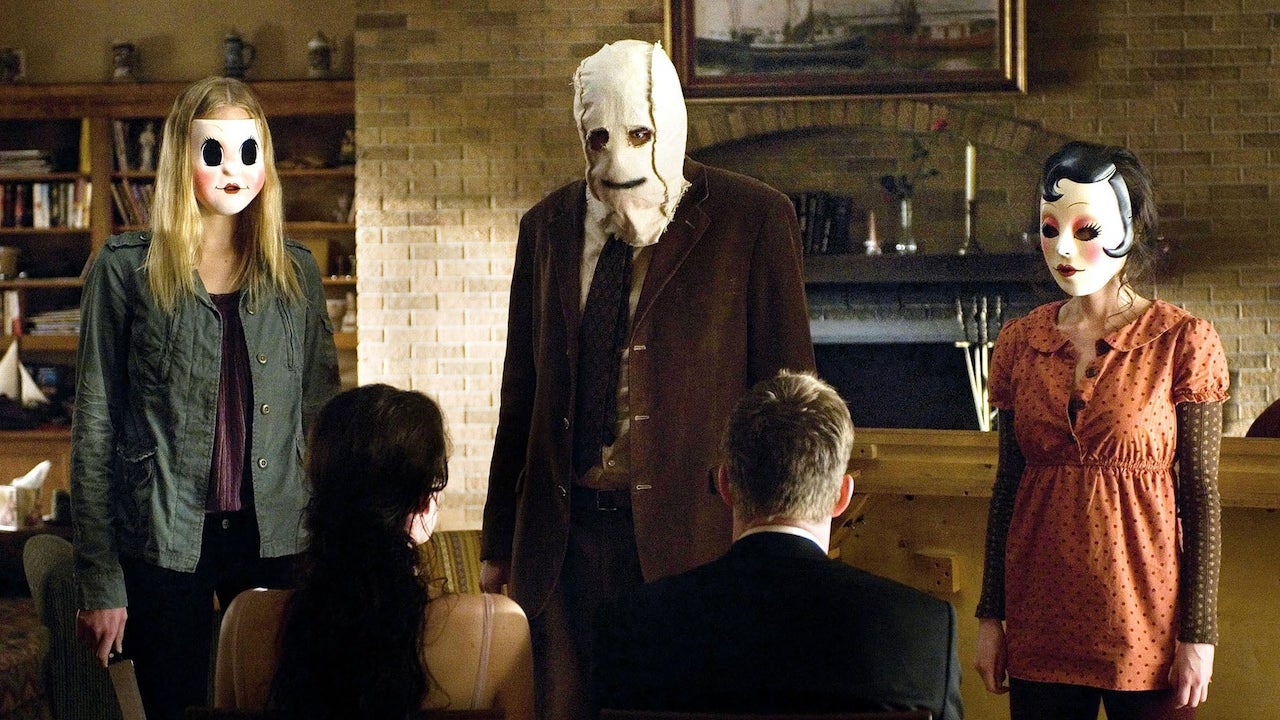
The Strangers (2008)
No motive, no connection to the victims, and absolutely no mercy. Stranger-on-stranger violence was spun out in this restrained, 70s-inspired, minimalist home invasion film, where masked figures lurk in the background and pace methodically around your home searching for you. The senselessness of the whole affair is spine-tingling, realising on screen a shared fear everybody has deep down. It could happen to any of us, as long as we were home.

The Witch (2015)
It signalled the start of a trend of hyper-aestheticized horror and yet still manages to outshine them all: Robert Egger’s tremendous debut of a Puritan exile family terrorized by supernatural forces starts by surgically picking at you before ramping up the fear to an ungodly roar. It’s always fun seeing the exact terrors of religious zealots actualised in front of them, plus the Early Modern English screenplay is a miracle.

Willy’s Wonderland (2021)
In a mad scramble to capitalise on Five Nights at Freddy’s before Blumhouse produces its official adaptation, the lowest of low-rent straight-to-digital horror fare came from Willy’s Wonderland, where Nic Cage was coaxed into destroying an array of creepy animatronic robots to bits on the condition that he never spoke any dialogue. It’s perfect for watching with friends over beers; tune out anytime characters are talking, and cheer to your heart’s content whenever the fuzzy robots get obliterated.

X (2022)
Ti West’s 70s slasher/porno tribute was already a step-up for the usually very stripped-back director; nobody expected a whole trilogy would sprout from this film. Mia Goth (in a stealth dual role!) leads a great ensemble as a low-budget adult shoot is hampered by the violent habits of sex-repressed elderly hosts. West has a firm handle on sculpting tense, effective kills and there’s a playful atmosphere to the whole gnarly affair.
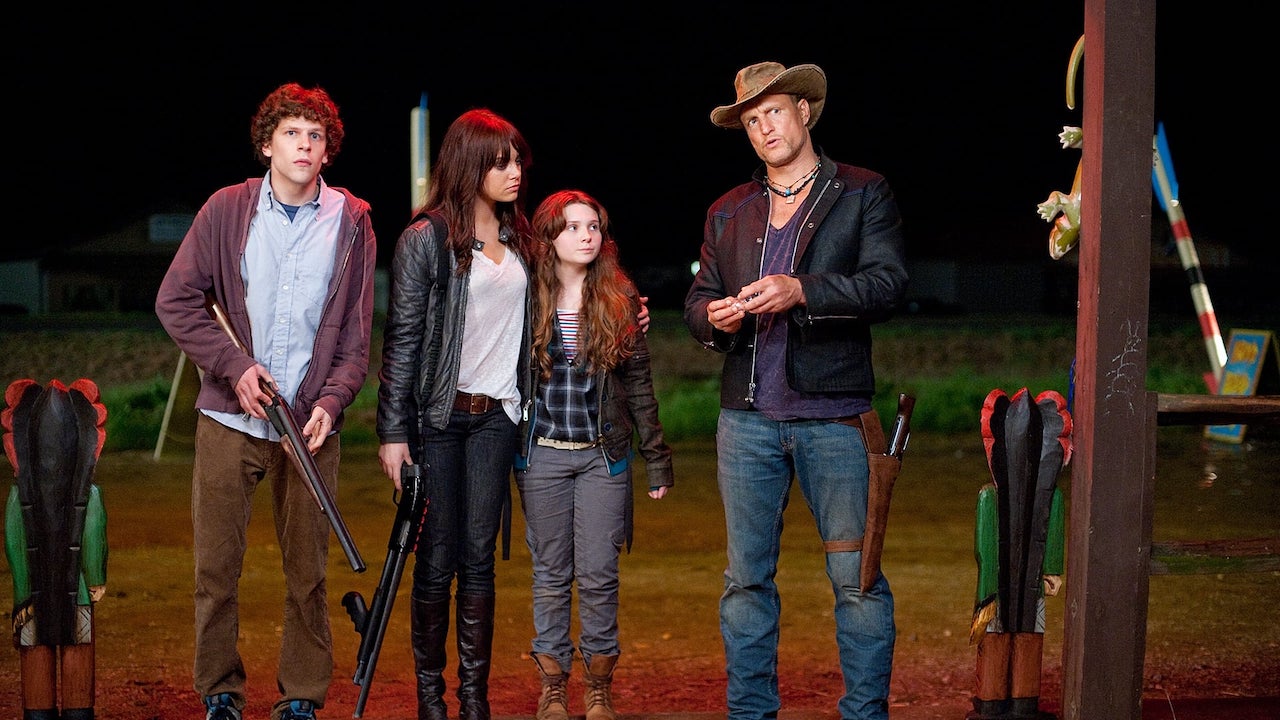
Zombieland (2009)
Horror-comedies have the difficulty of meeting fan expectations for two very distinct genres, but this American send-up of what was quickly becoming a 2000s zombie craze delivers. You definitely feel like the characters are parodying the archetypes of the genre, but most impressive is how bloody the film gets—never slacking to deliver on graphic zombie mayhem, as they should. Come for the Twinkies, stay for the nasty undead KOs.

